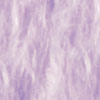Bisphenol A and CPAP
Bisphenol A and CPAP
Are CPAP cussions or tubes made with plastic containing Bisphenol A?
- LavenderMist
- Posts: 361
- Joined: Fri Jul 13, 2007 5:09 am
- Location: In the Mist
-
Bearded_One
- Posts: 597
- Joined: Fri Nov 17, 2006 9:35 am
- Location: Northern Virginia, near DC
-
Bearded_One
- Posts: 597
- Joined: Fri Nov 17, 2006 9:35 am
- Location: Northern Virginia, near DC
Bisphenol A is a key monomer in production of polycarbonate plastic and epoxy resins. Otherwise it is used in the following polymer types: polyesters, polysulfones, and polyether ketones. Bisphenol A is also used as an antioxidant in plasticizers and as a polymerization inhibitor in PVC.
Polycarbonate and epoxy resins, are made from BPA monomer.
There are seven groups of plastic polymers, each with specific properties that are used worldwide for many packaging applications. Each group of plastic polymer can be identified by its Plastic Identification code (PIC) - usually a number or a letter abbreviation. For instance, Low-Density Polyethylene can be identified by the number "4" and/or the letters "LDPE". The PIC appears inside a three-chasing arrow recycling symbol. The symbol is used to indicate whether the plastic can be recycled into new products
Plastic Identification Code Type of plastic polymer Common Packaging Applications:
1 Polyethylene Terephthalate (PET, PETE) Soft drink, water and salad dressing bottles; peanut butter and jam jars
2 High Density Polyethylene (HDPE) Milk, juice and water bottles; yogurt and margarine tubs; trash and retail bags.
3 Polyvinyl Chloride (PVC) Juice bottles; cling films
4 Low Density Polyethylene (LDPE) Frozen food bags; squeezable bottles, e.g. honey, mustard; cling films; flexible container lids.
5 Polypropylene (PP) Reusable microwaveable ware; kitchenware; yogurt containers; margarine tubs; microwaveable disposable take-away containers; disposable cups and plates.
6 Polystyrene (PS) Egg cartons; disposable cups, plates, trays and cutlery; disposable take-away containers; yogurt and margarine containers
7 Polycarbonate (PC) Beverage bottles; baby milk bottles.
Type 2,4 and 5 do not to leach chemicals in any significant amount. Type 1 (PET) and Type 6 (PS) have unreacted phthalate monomer in PET and unreacted styrene monomer in PS which could be leached to packed contents in certain conditions but those resins do not use Bisphenol A (BPA) during polymerization and package forming. Type 7 plastics, such as polycarbonate plastic and epoxy resins, are made from BPA monomer. When such plastics are exposed to hot liquids, BPA leaches out 55 times faster than it does under normal conditions. Also, Type 3 (PVC) could contain plasticizer with BPA.
Bisphenol A has been shown to have developmental toxicity, carcinogenic effects, and possible neurotoxicity. Recent studies suggest it may also be linked to obesity by triggering fat-cell activity.
Bisphenol A has been known to leach from the plastic lining of canned foods and, to a lesser degree, polycarbonate plastics that are cleaned with harsh detergents or used to contain acidic or high-temperature liquids. The chemical is found in almost everyone that lives in developed countries at low concentrations. Debate continues on what is the safe limit of this compound.
Polycarbonate and epoxy resins, are made from BPA monomer.
There are seven groups of plastic polymers, each with specific properties that are used worldwide for many packaging applications. Each group of plastic polymer can be identified by its Plastic Identification code (PIC) - usually a number or a letter abbreviation. For instance, Low-Density Polyethylene can be identified by the number "4" and/or the letters "LDPE". The PIC appears inside a three-chasing arrow recycling symbol. The symbol is used to indicate whether the plastic can be recycled into new products
Plastic Identification Code Type of plastic polymer Common Packaging Applications:
1 Polyethylene Terephthalate (PET, PETE) Soft drink, water and salad dressing bottles; peanut butter and jam jars
2 High Density Polyethylene (HDPE) Milk, juice and water bottles; yogurt and margarine tubs; trash and retail bags.
3 Polyvinyl Chloride (PVC) Juice bottles; cling films
4 Low Density Polyethylene (LDPE) Frozen food bags; squeezable bottles, e.g. honey, mustard; cling films; flexible container lids.
5 Polypropylene (PP) Reusable microwaveable ware; kitchenware; yogurt containers; margarine tubs; microwaveable disposable take-away containers; disposable cups and plates.
6 Polystyrene (PS) Egg cartons; disposable cups, plates, trays and cutlery; disposable take-away containers; yogurt and margarine containers
7 Polycarbonate (PC) Beverage bottles; baby milk bottles.
Type 2,4 and 5 do not to leach chemicals in any significant amount. Type 1 (PET) and Type 6 (PS) have unreacted phthalate monomer in PET and unreacted styrene monomer in PS which could be leached to packed contents in certain conditions but those resins do not use Bisphenol A (BPA) during polymerization and package forming. Type 7 plastics, such as polycarbonate plastic and epoxy resins, are made from BPA monomer. When such plastics are exposed to hot liquids, BPA leaches out 55 times faster than it does under normal conditions. Also, Type 3 (PVC) could contain plasticizer with BPA.
Bisphenol A has been shown to have developmental toxicity, carcinogenic effects, and possible neurotoxicity. Recent studies suggest it may also be linked to obesity by triggering fat-cell activity.
Bisphenol A has been known to leach from the plastic lining of canned foods and, to a lesser degree, polycarbonate plastics that are cleaned with harsh detergents or used to contain acidic or high-temperature liquids. The chemical is found in almost everyone that lives in developed countries at low concentrations. Debate continues on what is the safe limit of this compound.
I wonder if the tubing that is used with the CPAP humidifier heats up enough to leach Bisphenol A if indeed it is embedded in the plastic tube.Boodies wrote:Bisphenol A has been known to leach from....polycarbonate plastics that are cleaned with harsh detergents or used to contain acidic or high-temperature liquids.
-
Guest
It's Troubling
Hi friends,
This is an interesting and timely topic. Boodies has made an excellent post. Here is what I know...
A while back, I asked ResMed for a list of the materials in all their masks, as I experienced reactions to every mask I tried. They graciously emailed me a document listing the materials in each component of their various mask systems.
The document is confidential; otherwise, I would post it. The bottom line, though, and answer to lloyd's question, is YES, ResMed masks do contain polycarbonate.
This is an interesting and timely topic. Boodies has made an excellent post. Here is what I know...
A while back, I asked ResMed for a list of the materials in all their masks, as I experienced reactions to every mask I tried. They graciously emailed me a document listing the materials in each component of their various mask systems.
The document is confidential; otherwise, I would post it. The bottom line, though, and answer to lloyd's question, is YES, ResMed masks do contain polycarbonate.
Just got off the phone with Resmed. So the plastic lid for the humidifier chamber (that interlocks with the steel bottom) is indeed made with polycabon.
This means that when the plastic lid is heated to a certain temperature it most likely leaches PBA into the hose and mask and into our bodies.
I guess the next questions is are there any CPAP masks and humidifiers not made with the polycabon?
_________________
This means that when the plastic lid is heated to a certain temperature it most likely leaches PBA into the hose and mask and into our bodies.
I guess the next questions is are there any CPAP masks and humidifiers not made with the polycabon?
_________________
-
Bearded_One
- Posts: 597
- Joined: Fri Nov 17, 2006 9:35 am
- Location: Northern Virginia, near DC
Microwavable cooking dishes used to be made from polysulfone, which is a high temperature plastic - and leeches Bisphenol A, probably in large quantities when used at food cooking temperatures.
I am so glad that I have always distrusted using plastic cookware in the microwave and have always used glass or ceramic to cook in the microwave.
I knew that there was a reason that I distrusted using heated humidifiers.
I am so glad that I have always distrusted using plastic cookware in the microwave and have always used glass or ceramic to cook in the microwave.
I knew that there was a reason that I distrusted using heated humidifiers.












